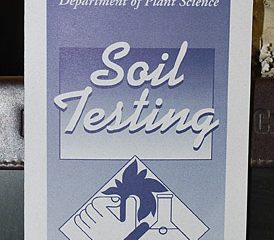A successful new lawn seeding depends largely on proper site preparation – and that goes well beyond what most people feel is adequate. First, understand that there are two, some would say three, properties of soil that need to be understood: physical, chemical, and biological.
The physical properties of a soil largely refer to the soil texture which plays a large roll in moisture retention and aeration and thus the soil’s ability to supply moisture and oxygen to the roots. Tied in with this is soil compaction, or lack there of, allowing the roots to move easily into the soil.
The chemical properties refer to the soil’s pH and fertility. Hands down, the most important thing you can know about a soil is the pH. The pH is a measure of the concentration of the hydrogen ion or acidity. This is what controls chemical reactions in the soil and determines the availability of fertilizer to the plant. Again, fertilizer can be available in the soil, but if the pH is either too acidic or too alkaline, the plant can’t get the fertilizer. THEREFORE GET A SOIL TEST DONE!
In recent years more and more recognition has been given to the biological properties of the soil, and as a whole, we still have more to learn. I can tell you I have personally had some remarkable success reducing soil compaction and improving soil structure with biological supplements that are almost hard to believe. I always add some mycorrhizae fungi and rhizosphere bacterium which greatly add to the success of the planting.
So consider these points when seeding:
Is the soil hard and compacted? Sandy? Poorly drained? If so, amend the soil as needed with things like coarse peat moss which will restore the soil’s friability.
Is the pH around 6.5? Not sure? GET A SOIL TEST DONE! Remember, the addition of soil amendments can also have an affect on the pH.
Use an appropriate fertilizer in the appropriate amount.
Apply some biologicals and incorporate either by tilling or watering in.
Lastly my favorite – plant the seed. If you can see the seed laying on top of the soil it is not planted. Use the back of a wire rake to lightly cover the seed with soil.

